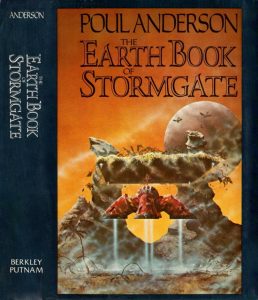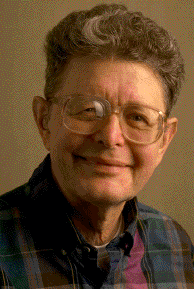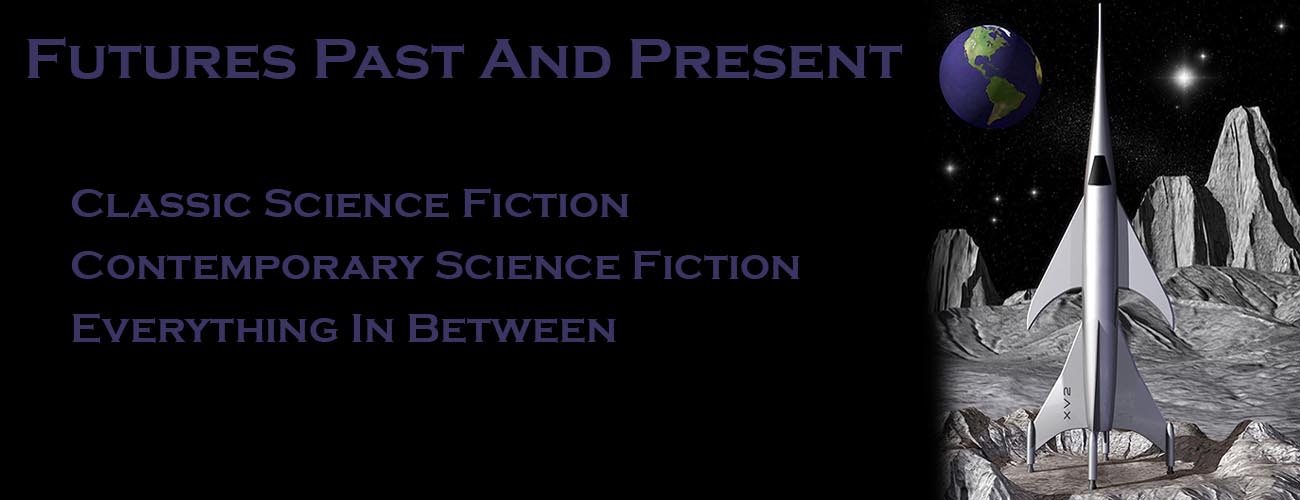 I’ve been rereading Poul Anderson’s future history, beginning at the beginning. This series is sometimes call the Technic Future history. The name comes from the Polesotechnic League, which is the first interstellar government, although it’s more of a league of intergalactic traders and merchants. Baen has collected all the stories in order of internal chronology. The first volume is called The Van Rijn Method.
I’ve been rereading Poul Anderson’s future history, beginning at the beginning. This series is sometimes call the Technic Future history. The name comes from the Polesotechnic League, which is the first interstellar government, although it’s more of a league of intergalactic traders and merchants. Baen has collected all the stories in order of internal chronology. The first volume is called The Van Rijn Method.
This series has to main subseries. The first concerns the trader Nicholas Van Rijn (rhymes with “line”) and his protege David Falkayn. The second subseries deals with Dominic Flandry, who is an agent trying to stave off the fall of the Galactic Empire, even though he knows it will be ultimately futile.
In The Van Rijn Method, we get the stories that take place in the earliest part of the future history. I’ve read a little over half the book, and I’ll have another post for the rest of it once I’m done.
The first story is “The Saturn Game”. This one isn’t one of my favorites, even though it won both the Hugo and the Nebula in 1982. Set in the near future, it concerns an expedition to Saturn in which the crew have been playing a fantasy RPG and are losing touch with reality.
 Much of the rest of the book, at least that I’ve read so far, is a reprint of The Earth Book of Stormgate, which is one of my favorite Anderson collections. The framing sequence is a history written by an alien. The aliens, a race of bird-like predators named the Ythri, first met men in “Wings of Victory”. The Ythri will play an important role in future events.
Much of the rest of the book, at least that I’ve read so far, is a reprint of The Earth Book of Stormgate, which is one of my favorite Anderson collections. The framing sequence is a history written by an alien. The aliens, a race of bird-like predators named the Ythri, first met men in “Wings of Victory”. The Ythri will play an important role in future events.
“The Problem of Pain” deals with an age-old question without providing a satisfying answer.
“Margin of Profit” intoduces Nicholas Van Rijn, a huge man with huge appetites whose colorful speech is makes him one of the more memorable characters in science fiction. Here he breaks a blockade to keep his markets open.
“How to Be Ethnic in One Easy Lesson” introduces a character who will shop up in later stories. It probably couldn’t be written today without being accused of cultural appropriation.
“The Three Cornered Wheell” and “A Sun Invisible” introduce David Falkayn while still a young man, before he joins up with Van Rijn. Both f them are puzzle stories. In the first the solution to the problem is a matter of life and death: how do you move a large object across a long distance when you don’t have the ability to fly and the local religion forbids anything circular, including wheels? In the second, Falkayn has to identify where an invading fleet is coming from before they destroy all trade in the sector.
 That’s as far as I’ve gotten. I first read these stories in high school and college, and loved them on the whole. They’ve held up well. Sometimes rereading stories and books from your youth can be a disheartening thing. Not so with these. Anderson was one of the best. I’m sticking with the rest of this series.
That’s as far as I’ve gotten. I first read these stories in high school and college, and loved them on the whole. They’ve held up well. Sometimes rereading stories and books from your youth can be a disheartening thing. Not so with these. Anderson was one of the best. I’m sticking with the rest of this series.
If you’ve not read Poul Anderson, this book is a great place to start.
I’ll be doing a many ore posts on Anderson over the next year, not only on his Technic series, but also on his fantasy.

“The Man Who Counts” AKA “War Of the Wingmen” should be coming up; it is the defining Van Rijn story.
Anderson wrote Flandry stories all his life, and the order of writing is not that of internal chronology; so, reading the books in order will alternate between work of the mature author and pieces written by the young Anderson for Planet Stories. All are good, but they are good in different ways.
Curiously enough, while Van Rijn and Falkayn often appeared in “Astoundalog”, I don’t believe that Flandry ever did. He seemed to frequent Planet and Amazing. I don’t know if too much action for Campbell or what… Flandy and Bond were created about the same time; so, any similarities are indeed coincidental.
“The Man Who Counts” is next after the short story “The Season of Forgiveness”. I’m looking forward to it. The second summer term started last week, and I’m teaching a class. It’s all online this go around, so I’m putting in more time than I would like. That’s taking time away from reading writing, and blogging.
I read most, if not all, of the stories in this series way back in high school and college in order of the internal chronology, at least where Flandry was concerned. I don’t recall about the rest. I preferred the later Flandry works, I think because they were novels with more complex plots.
I’ve heard the comparison between Bond and Flandry before, and IIRC, Anderson said Flandry was more of a science fiction version of The Saint than he was of Bond. Not having read any Saint books, I can’t comment.
The Saint was a criminal who preyed on other criminals (giving most of his proceeds to the deserving.) He wasn’t a spy like Flandry or Bond. So I can’t help but think Flandry was more like Bond than the Saint. It’s undoubtedly a coincidence since they came out about the same time with Flandry actually preceding Bond by a year or two. The Saint was probably an influence on Bond, though.